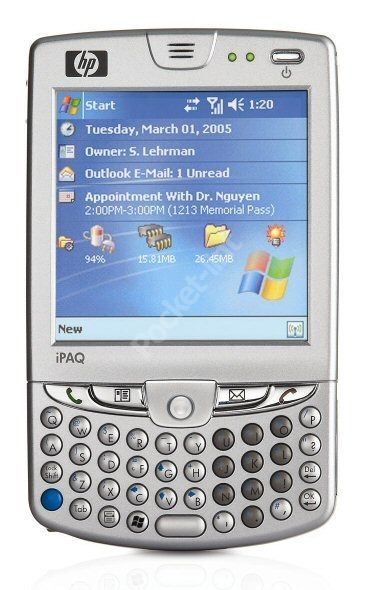Just as the great unwashed now think that all things MP3 is called an iPod, so there was a time when all handheld devices were simply known as iPAQs. This must have annoyed most vendors, especially Palm, but HP was never heard to complain.
Our quick take
The HP iPAQ hw6515 Mobile Messenger may not be the best looking device on the market and as with all connected PDAs, there is a trade-off between the usability and the size of the unit. That said, it works well and the quality of the device isn't in question. We're just concerned that HP has taken the easy route and not really released a device to try and push the market forward, which results in a “me too” kind of product. From an innovator of HP's league, “me too” doesn't really fit the bill.

HP IPAQ HW6515 Mobile Messenger - 3.5 / 5
| FOR | AGAINST |
|---|---|
|
|
Now, the company is attempting to do the same with the connected device. The HP iPAQ hw6515 Mobile Messenger is only the second such handset the company has launched and as you would expect, HP has opted for the Microsoft route. However, rather than finding Smartphone Edition powering it, you'll find Pocket PC Phone Edition 2003 running at the heart of the machine.
There are immediate advantages as well as problems with this: it's the older OS, so it is a proven architecture and runs on tested hardware, so HP doesn't need to develop and test from the ground up. So this should make it reliable and also keep the cost down. So, you'll find the same processing power and memory as on any mid-range to high-end iPAQ; namely the 312MHz PXA270 processor and 128Mb of memory.
Sadly, for the gadget freak it does mean that you're restricted to GPRS rather than 3G. HP has no immediate plans to port the device over to Windows Mobile 5.0, so there is likely to be no change there for some time to come.
The device itself comes with a touch sensitive screen as well as a full QWERTY keyboard. The keys are on the small side and don't feel as robust as on the similar shaped Palm Treo. That said, the Messenger is wider, so it's actually more comfortable to use and you'll soon find yourself writing long emails as well as reports on the device.
When it comes to connectivity, the OS is fully compliant with all the leading technologies, so you can set it up with Exchange server had have email pulled to the device, or you can opt to take the Blackberry route and have mail pushed straight to the device.
The screen is 3in in size and supports the standard 240 x 240-pixel image count, making for a bright and trouble free screen. You'll find a 1.3-megapixel camera built-in. Incidentally, if you're considering this device for your company but don't like the idea of a camera, HP is offering the hw6510, which has the same base specification but without the camera.
Bluetooth and infrared come as standard but HP has chosen to leave Wi-Fi out. While this may seem a curious choice, we have to applaud a far more beneficial tool for the mobile traveller: namely GPS. This is the only connected device that comes with GPS built-in as standard. With no awkward antenna or aerial, you'll find that it's a benefit without a compromise.
To recap
HP’s new connected device isn’t so much a smartphone as a PDA with a keyboard
